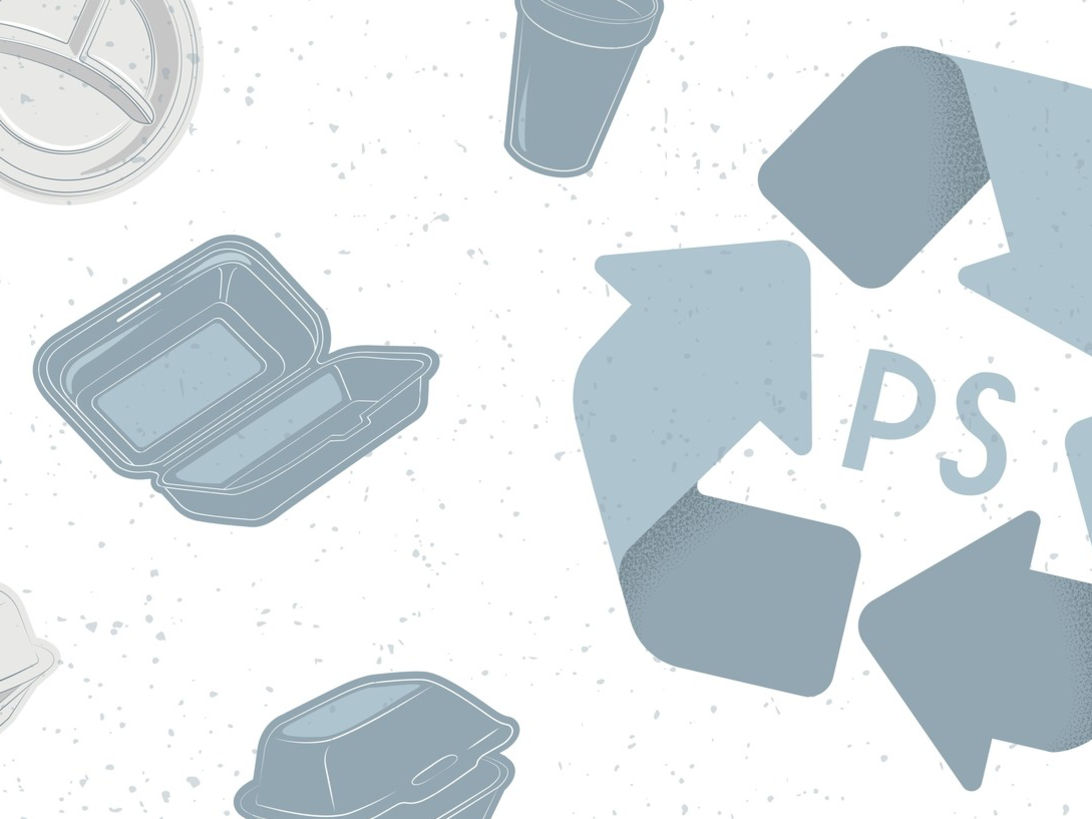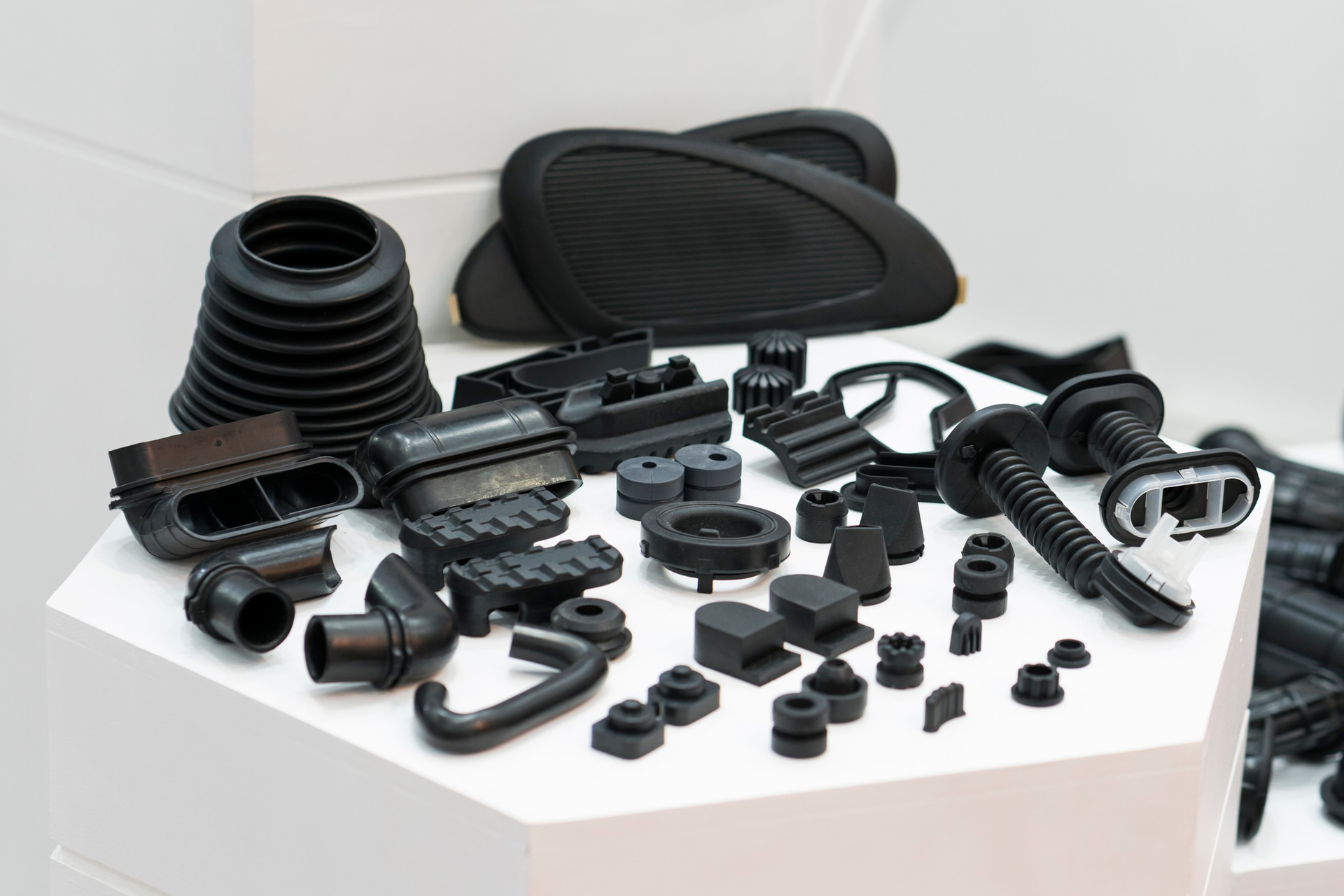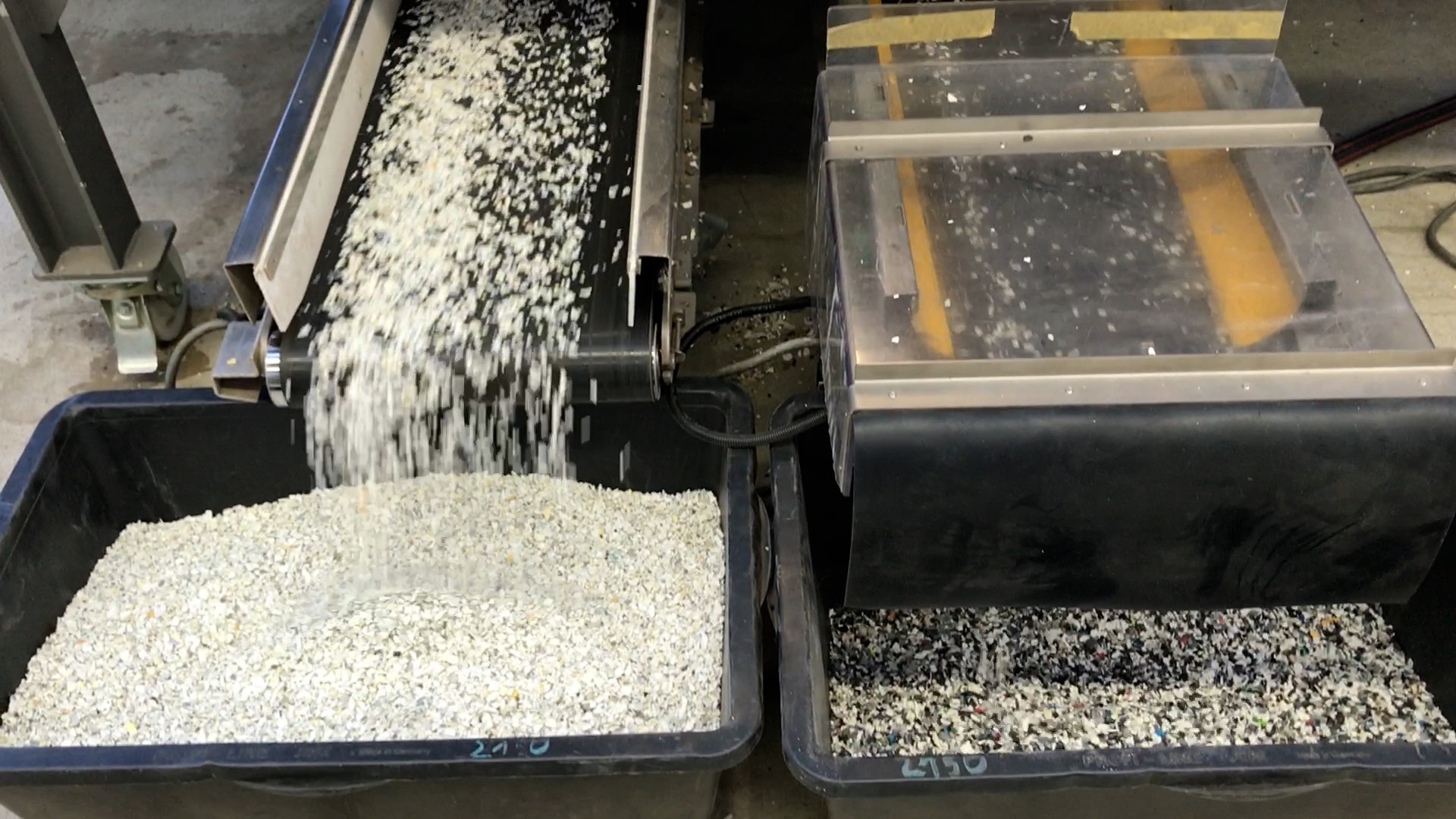To transition from a linear to a circular economy for plastics, all plastics must remain in the cycle. However, there are significant differences in recyclability among the various types of plastics. You can read about the recycling of polystyrene (PS) and acrylonitrile-butadiene-styrene (ABS) and what distinguishes these two types of plastics in this article.

What is polystyrene (PS)
Polystyrene, or PS for short, is one of the standard plastics and is used in many areas of daily life, either as a thermoplastic material or as foam (EPS). Disposable items made of polystyrene have become established, especially in the scientific field as well as in many economic and household areas.
In its solid state, polystyrene is clear, hard, impact-sensitive, and electrically insulating. However, it can be easily colored and printed. Its physiological safety has also made the plastic attractive for the food sector as a transparent packaging. In addition, there are disposable drinking cups, lids with spouts for coffee cups, or disposable cutlery. But yogurt cups or packaging for honey or coffee cream are also made from polystyrene. Polystyrene is also frequently used in industry, for example for component covers, coil bodies, or control knobs.
As expanded polystyrene, EPS, also known as Styrofoam, polystyrene is used for the production of take-away packaging or trays and containers for fish, meat, fruits, and vegetables. Compared to other plastics, polystyrene is very cost-effective. It also has a high permeability to gases and water vapor and is odorless and tasteless, which makes it ideal for food storage.

What is Acrylonitrile Butadiene Styrene (ABS)?
Acrylonitrile-Butadiene-Styrene (ABS) is the most significant technical thermoplastic plastic in terms of quantity. It is a polymer consisting of three monomers – acrylonitrile, butadiene, and styrene. Its shape can be changed any number of times at certain temperatures. It is moisture and dirt repellent and largely resistant to fats and oils, electrostatic charge, and temperature fluctuations. ABS is rigid, impact and scratch-resistant, and can also be easily glued, welded, and machined. The plastic is also well-suited for coating with polymers or metals. The main areas of application for ABS plastics are 40% household appliances and 26% electrical and electronic applications (E&E). ABS has also been used in the toy industry for decades: for example, well-known building blocks are made from acrylonitrile-butadiene-styrene. In the automotive industry, ABS is used for body parts, trim strips, spoilers, headlight lenses, as well as various interior parts. Last but not least, 3D printing technology has made the plastic ABS known worldwide, as the substance is one of the most used materials in the 3D printing process.
Recycling potentials for PS and ABS
Recycling of PS
Since the properties of polystyrene change only slightly even after multiple processing, the used material can be very well utilized as a recyclate recycled.
The polystyrene used for packaging in retail is collected nationwide by the dual systems in Germany. In sorting plants, hard PS can be easily separated using near-infrared technology. Used EPS packaging is also well-suited for material recycling. They are collected separately and delivered as their own fraction to recycling sites.
Pure polystyrene is processed into high-quality recyclate through mechanical crushing and an appropriate recycling process, which is then used for the production of various everyday items such as folding boxes, furniture, or clothes hangers. Alternatively, the used plastic packaging can be remelted into new products using the injection molding process.
Recycling of ABS
ABS can generally be very well mechanically recycled. The advantage of the plastic is that, as is the case with PS, it still retains the same properties as before the recycling process when used as a recyclate. However, recyclers often face a major challenge. In the case of household appliances or electronic waste, after the separation of metal fractions in sorting plants, a plastic mixture remains that not only consists of various types of plastics but is also contaminated by dust, wood, glass fragments, residual metals, and other impurities. From this complex mixture, clean and reusable plastic fractions must be produced. Color also plays a significant role in the recycling process. Electronic waste, for example, has a particularly high proportion of black plastics, which in turn are not recognized by the near-infrared technology used in sorting plants.
Thus, a large proportion of valuable ABS ends up in waste due to the black color. A solution is offered by the so-called electrostatic separation technology, which can also separate completely black material mixtures and can even achieve purities of up to 99% in ABS fractions. However, this is only possible if a pre-concentration of the electronic waste occurs, sorting out plastics that contain, for example, flame retardants. For this plastic pre-concentration from complex material mixtures, a combination of dry and wet processing techniques is required.
Conclusion
Both PS and ABS can theoretically be well recycled and returned to the plastic cycle. While PS is already largely successfully recycled and used in the production of new products, too much valuable ABS still ends up in the trash. The reason for this is that ABS is mainly used for household and electrical appliances, which represent complex material mixtures. Here, recycling companies often lack the right sorting technologies to sort these complex mixtures and produce high-quality recyclate, from which new products can be created.

